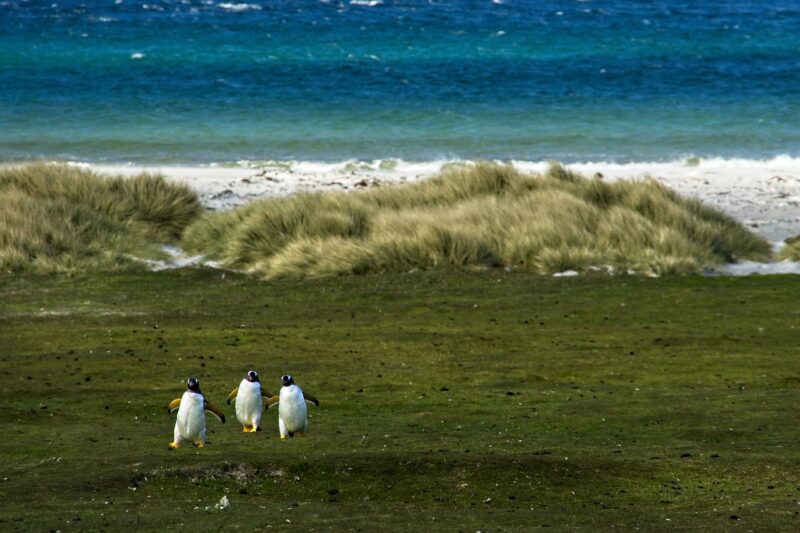The Islands With the Most Unique Wildlife Habitats for Nature Lovers to Explore
November 17, 2024

Islands are often regarded as paradise on Earth, boasting not only stunning landscapes but also unique ecosystems that are home to an array of wildlife species found nowhere else on the planet. For nature enthusiasts, these islands present unmissable opportunities to immerse oneself in diverse habitats and witness incredible biodiversity. This article will explore some of the most captivating islands known for their distinctive wildlife habitats, each offering a unique window into the complexities of nature.
1. Galápagos Islands, Ecuador
The Galápagos Islands are perhaps the most famous example of unique wildlife habitats. This archipelago, located 600 miles off the coast of Ecuador, is celebrated for its endemic species and was instrumental in Charles Darwin’s theory of evolution. Visitors can explore the islands’ volcanic landscapes and rainforests, where unusual wildlife thrives.
Among the highlights are:
- Giant Tortoises: The islands are home to several species of giant tortoises, some of which can live over 100 years. These creatures are not just huge but are also key to the islands’ unique ecosystems.
- Marine Iguanas: The only lizards in the world that swim, marine iguanas are known for their ability to dive into the ocean for algae and marine plants.
- Blue-footed Boobies: These enchanting birds, with their striking blue feet, are known for their elaborate mating dances. Watching these performances on the cliffs is a one-of-a-kind experience.
Exploring the Galápagos offers not only a chance to marvel at these incredible animals but to understand the delicate balance of their ecosystem.
2. Madagascar
Madagascar is a stunning island nation off the southeastern coast of Africa, renowned for its biodiversity. Approximately 90% of Madagascar’s wildlife is found nowhere else, making it a veritable treasure trove for nature lovers.
Highlights of Madagascar’s unique wildlife habitats include:
- Lemurs: The island is famous for its lemur population, which comprises over 100 different species, including the iconic ring-tailed lemur and the endangered Indri lemur, known for its unique calls.
- Baobab Trees: These enormous trees, often referred to as “upside-down trees,” create surreal landscapes. Various animals depend on them for food and habitat.
- Chameleons: Madagascar is famed for its chameleon species, including the largest known chameleon, the Parson’s chameleon, which can change color for communication and camouflage.
Nature enthusiasts explore through rainforests, dry deciduous forests, and spiny forests, uncovering the island’s rich biodiversity.
Borneo, Malaysia and Indonesia
Borneo, shared by Malaysia, Indonesia, and Brunei, is another location rich in unique wildlife habitats. Home to some of the oldest rainforests, Borneo’s rainforests support incredibly diverse ecosystems.
Things to see include:
- Orangutans: Borneo is one of the last remaining habitats for the critically endangered orangutan. Visitors can observe these majestic apes in their natural environment in places like the Sepilok Orangutan Rehabilitation Centre.
- Proboscis Monkeys: Known for their distinctive large noses, these monkeys are often spotted in mangrove forests and coastal areas, captivating visitors with their unique features and behaviors.
- Rafflesia Flower: Home to the world’s largest flower, Rafflesia arnoldii, which can reach up to 3 feet in diameter and emits a pungent odor of decay to attract pollinators.
The rainforests of Borneo offer dense nature experiences, showcasing the colorful tapestry of life through soaring trees and diverse animal species.
The Falkland Islands
Situated in the South Atlantic, the Falkland Islands are home to unique bird species and marine wildlife. The archipelago comprises over 700 islands, with diverse habitats ranging from rugged coastlines to sub-Antarctic forests.
Wildlife enthusiasts here can witness:
- Penguins: The islands host numerous penguin species, including the King Penguin and the Macaroni Penguin, providing visitors with intimate experiences as they waddle on beaches or nest in colonies.
- Sea Lions and Elephant Seals: The beaches are also frequented by sea lions and massive elephant seals, which can be seen basking in the sun or engaging in vocal sparring matches.
- A Variety of Birds: The Falkland Islands boast around 200 species of birds, including the Black-browed Albatross, known for its incredible wingspan and graceful flight.
The remote and rugged nature of the Falklands provides nature lovers with a tranquil setting to observe wildlife in their natural habitats while enjoying breathtaking landscapes.
The Komodo Islands, Indonesia
Known primarily for the Komodo dragon, the Komodo Islands are a cluster of islands that offer an incredible range of wildlife. Komodo National Park, which includes Komodo, Rinca, and Padar islands, is recognized for its unique flora and fauna.
Important wildlife includes:
- Komodo Dragons: These massive lizards, which can grow up to 10 feet long, are the largest species of monitor lizard and are a major draw for visitors wishing to see them in the wild.
- Coral Reefs: The waters around the islands boast stunning coral reefs that are home to various marine life, including vibrant fish, manta rays, and turtles. Scuba diving and snorkeling here reveal remarkable underwater ecosystems.
- Flora and Fauna Diversity: The islands have a diverse range of plant life, including tropical forests and savannahs, providing habitats for various terrestrial species, creating ecological niches for the island’s wildlife.
Adventuring through the Komodo Islands offers a balance of thrilling wildlife encounters and stunning natural beauty, both on land and beneath the waves.
Conclusion
These islands represent just a fraction of the incredible wildlife habitats across the globe waiting to be explored. From the Galápagos Islands, with their evolutionary significance, to Madagascar’s unparalleled diversity, each destination offers an exciting opportunity to observe and appreciate nature’s wonders.
By visiting these unique environments, nature lovers not only witness biodiversity firsthand but also contribute to the ongoing conservation efforts necessary to protect these fragile ecosystems. Whether you’re hiking through lush forests or snorkeling in vibrant coral reefs, exploring these islands can be an unforgettable experience that deepens your appreciation for our planet’s wildlife. Nature truly holds its most unique treasures within the natural havens of these spectacular islands.








